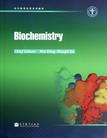Biochemistry-生物化学
2012-6
丁卫、 贾弘禔 高等教育出版社 (2012-06出版)
丁卫,贾弘禔 编
169
In the past decade, medical education achieved great development in Capital Medical University, China (CCMU), serving the students coming from all parts of China and overseas. On the one hand, the growing number of foreign students at CCMU crave for English books suitable for the teaching and learning with the Chinese medical education system; on the other hand, the Chinese students are asked and eager to actively participate in the international academic exchanges nowadays. To meet the needs of both foreign and Chinese students majoring in basic and clinic medical sciences, CCMU puts forward a project to compile textbooks in English as a part of the university's developing strategy and objectives, which are "based on Beijing, embrcing the nation; leading in China and recognized around the world". Thus, the textbook of biochemistry in English was prepared by the senior instructors in the Department of Biochemistry and Molecular Biology, CCMU.
Chapter1 Molecular Compositions of Protdns 1.1 Molecular Compositions of Proteins 1.2 Protein Structure 1.3 Protein Structure and Function 1.4 Protein Physicochemical Properties 1.5 Classification of Proteins Chapter2 Nucleic Acids 2.1 Nucleotides and Nucleic Acids 2.2 Spatial Structure and Function of DNA 2.3 Spatial Structure and Function of RNA 2.4 Physicochemical Properties of Nucleic Acids Chapter3 Enzymes 3.1 Structures and Properties of Enzymes 3.2 Enzymatic Kinetics 3.3 Regulation of Enzymes 3.4 Medical Aspects of Enzymes Chapter4 Metabolism of Carbohydrates 4.1 Overview 4.2 Glycolysis and Anaerobic Oxidation of Glucose 4.3 Aerobic Oxidation of Glucose 4.4 Pentose Phosphate Pathway 4.5 Gluconeogenesis 4.6 Glycogen Catabolism Chapter5 Lipid Metabolism 5.1 Overview 5.2 Triglyceride Metabolism 5.3 Phospholipid Metabolism 5.4 Cholesterol Metabolism 5.5 Lipid Transportation in Plasma Chapter5 Biological Oxidation 6.1 Electron Carriers and Electron Transport Chain 6.2 Oxidative Phosphorvlation 6.3 Shuttle Systems 6.4 Mitochondrial Diseases Chapter7 Amino Acid Metabolism 7.1 Requirement of Protein/Amino Acids 7.2 Protein Digestion,Absorption and Putrefaction 7.3 Amino Acid Metabolic Pool 7.4 General Pathways of Amino Acid Catabolism 7.5 Metabolism of Individual Amino Acids Chapter8 Metabolism of Nucleotides 8.1 Metabolism of Purine Nucleotides 8.2 Metabolism of Pyrimidine Nucleotides 8.3 Conversion of Nucleotides 8.4 Nucleotide Metabolism Related to Medicine Chapter9 Regulation and Integration of Metabolism 9.1 Characteristics of Metabolism 9.2 Interconversion of Metabolic Pathways 9.3 Regulation of Metabolisms Chapter10 DNA Biosynthesis 10.1 DNA-dependent DNA Synthesis(Replication) 10.2 RNA-dependent DNA Svnthesis(Reverse Transcription) 10.3 DNA Damage and Repair Chapter11 RNA Biosynthesis 11.1 RNA Biosynthesis(Transcription) 11.2 RNA Post-transcriptional Processing Chapter12 Protein Biosynthesis,Sorting and Targeting 12.1 Protein Synthesis System 12.2 Protein Synthesis in Prokaryotes 12.3 Protein Synthesis in Eukaryotes 12.4 Protein Sorting and Targeting 12.5 Clinical Relevancies of Protein Synthesis Chapter13 Biochemistry of Blood 13.1 Composition and Functions of the Blood 13.2 Plasma Proteins 13.3 Blood Cell Metabolism Chapter14 Biochemistry of the Liver 14.1 Metabolic Roles of the Liver 14.2 Biotransformation in the Liver 14.3 Metabolism of Bile Acids 14.4 Bile Pigment Metabolism
版权页: 插图: 1.4.2 Protein Solution Behaves Colloid PropertyProteins are polymers with molecular weights generallyin 10-1,000KD.According to the measurementknowledge,for example,a globular protein withmolecular weight of 34.5KD,the particle diameteris 4.3nm.Therefore,the particle diameter of proteinmolecules are generally in 1-100nm,forming acolloidal solution in water,with a Tyndall phenomenon,Brownian motion.not through a semipermeable membrane,slower diffusion,greater viscosity etc. Proteins contain many hydrophilic groups suchas amino,carboxyl,hydroxyl,thiol and amidegroup on the surface,which form a hydration shellwith water molecules to separate the particles ofprotein molecules with each other.In addition,proteinscarrying the same type of charges make electricrepulsion.Hydration shell and electric repulsionmake proteins stable in solution. 1.4.3 Proteins may Undergo Denaturationand Rena tura tion The process in which a protein loses its native conformationunder the treatment of denaturants iscalled protein denaturation.The denaturants includephysical factors such as heat,ultraviolet light,violent shaking,and chemical factors such as strongacids,bases,organic solvents and detergents.A lossof three dimensional structure is sufficient to causechange of physical and chemical properties and binlogical characteristics of proteins,loss of function,but does not affect the primary structure of proteins.Denaturation is essentially the breakage ofnoncovalent bond(hydrogen bond,ionic bond,hydrophobic interactions,etc.).The denatured proteins tend to decrease in solubility.increase the viscosity,and lose the biological activity.Denaturationof some proteins is reversible.
《医学教育改革系列教材:生物化学》由高等教育出版社出版。
